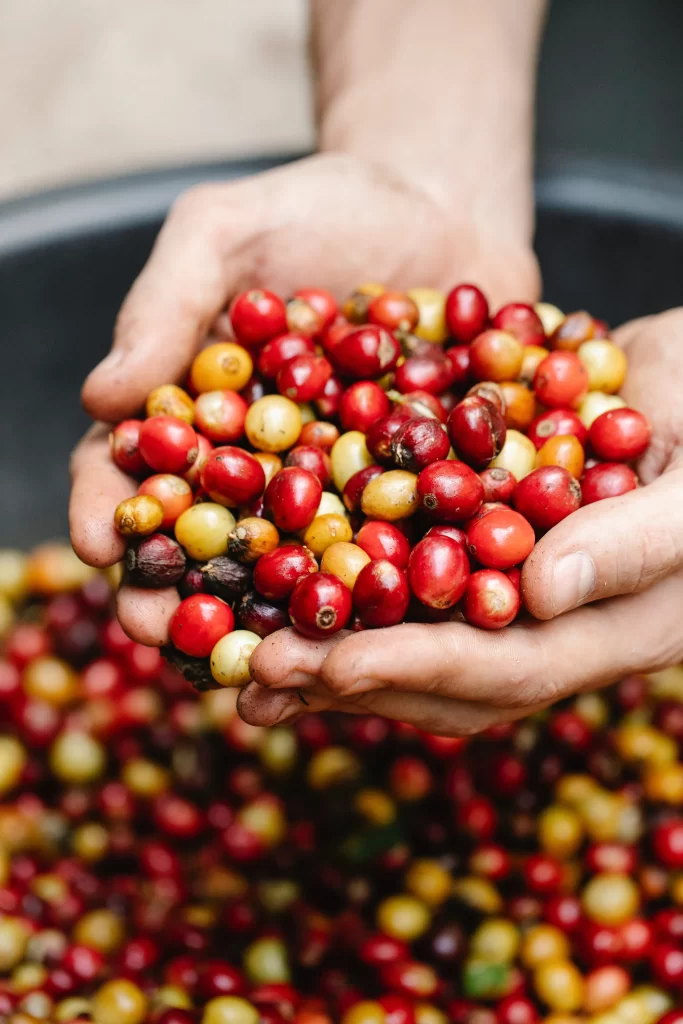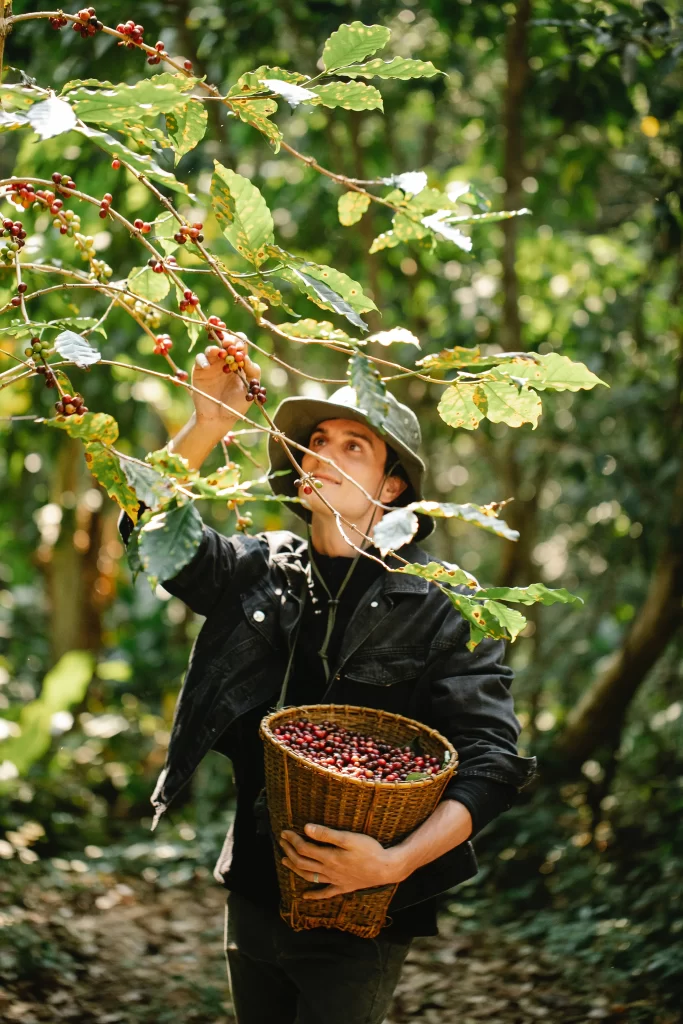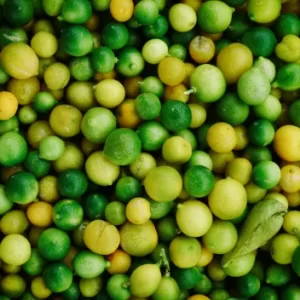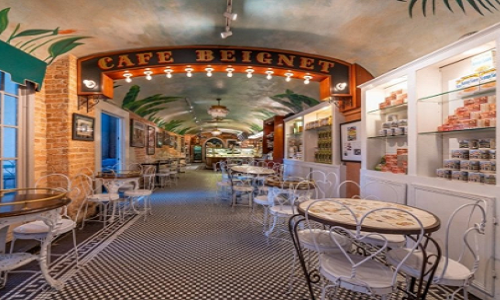Indulge in the rich flavors of Indonesian cuisine with our premium green beans. Trust our reliable distribution for your culinary needs.
Table of Contents
Indonesia, an archipelago teeming with lush landscapes and rich biodiversity, is not only renowned for its stunning beaches and diverse culture but also for its exceptional agricultural produce.
Among the countless gems that this tropical paradise offers, green beans stand out as one of its most prized exports.
With a thriving coffee industry and a long-standing tradition of cultivating high-quality beans, Indonesia has established itself as a leading distributor of green beans worldwide.
From the verdant plantations nestled in the highlands to the bustling markets where these precious beans are traded, join us on a journey through the heart of Indonesia’s vibrant green bean industry.
Overview of the green beans industry in Indonesia
The green beans industry in Indonesia is one of the most promising and rapidly growing sectors in the country.
With its rich soil, diverse climate, and favorable growing conditions, Indonesia has become a major player in the global market for green beans.
The country’s vast agricultural lands are primarily dedicated to coffee cultivation, with green beans being a significant export crop.
Indonesia’s green bean industry is characterized by a strong emphasis on sustainability and quality.
Many farmers in the country have embraced organic farming practices to meet the rising demand for environmentally-friendly produce.
Additionally, Indonesia boasts an impressive array of coffee varieties, with each region having its own unique flavor profiles.
From smooth and creamy Arabica to bold and robust Robusta, there is something to suit every coffee lover’s taste preferences.
In recent years, there has been a surge in specialty coffee shops and micro-roasters seeking high-quality Indonesian green beans for their offerings.
These businesses are not only focused on serving exceptional brews but also on supporting local farmers and promoting fair trade practices.
By working directly with Indonesian farmers or partnering with cooperatives, these establishments can ensure that they source sustainable green beans while also contributing to the economic growth of rural communities.
Overall, the future looks bright for Indonesia’s green beans industry as it continues to provide both economic opportunities and delicious cups of coffee around the world.
With its commitment to sustainability, focus on quality production, and thriving specialty scene, this sector offers endless possibilities for both consumers and entrepreneurs alike.

History: Evolution of green beans production in Indonesia
Green beans, also known as snap beans or string beans, have a rich history in Indonesia.
The production of green beans in the country dates back to ancient times when it was mainly cultivated for personal consumption.
However, with the increasing demand for this nutritious vegetable, commercial cultivation soon became popular.
Indonesia’s green bean production has evolved significantly over the years. In the past, farmers relied on traditional farming methods and limited technology to grow green beans.
The introduction of modern agricultural practices and advanced machinery has revolutionized the industry, making it more efficient and productive.
Today, Indonesia is one of the leading producers of green beans globally. The country’s fertile soil and favorable climate provide ideal conditions for cultivation.
Farmers now have access to improved seeds that yield higher-quality crops with better resistance to pests and diseases.
Furthermore, advancements in transportation and logistics have made it easier to distribute green beans across domestic and international markets.
This has helped Indonesian farmers expand their reach and generate economic growth through export opportunities.
In recent years, there has been a growing emphasis on sustainable farming practices in the Indonesian green bean industry.
Many farmers are adopting organic farming methods to minimize environmental impact while meeting consumer demands for healthier food options.
Overall, the evolution of green bean production in Indonesia showcases how innovation and adaptation drive progress in agriculture.
It not only benefits local farmers but also contributes to global food security by ensuring a steady supply of this versatile vegetable.
Market Potential: Demand and opportunities for distributors
Indonesia presents a lucrative market for green beans distributors, thanks to the growing demand for high-quality coffee both domestically and internationally.
The country’s strong coffee culture, coupled with its expanding middle class and increasing consumption of specialty coffees, creates ample opportunities for distributors to tap into.
With a population of over 270 million people, Indonesia offers a substantial consumer base that is increasingly seeking out premium coffees.
Furthermore, the global demand for Indonesian coffee has been steadily rising in recent years.
The unique flavor profiles and distinct characteristics of Indonesian green beans have attracted attention from coffee enthusiasts all around the world.
This presents a significant opportunity for distributors to establish themselves as key players in the international market by connecting Indonesian coffee farmers with buyers abroad.
Additionally, as more consumers become conscious of sustainability and ethical sourcing practices, there is an emerging market segment that values traceability and transparency in the supply chain.
This provides an avenue for distributors to position themselves as intermediaries between responsible producers and discerning consumers.
By ensuring that their products meet these ethical standards and promoting their partnerships with sustainable farming communities in Indonesia, distributors can carve out a niche within this growing market segment.
In conclusion, the potential demand and opportunities for green beans distributors in Indonesia are vast.
With a burgeoning domestic market driven by an increasing number of discerning coffee drinkers, along with a growing international appetite for high-quality Indonesian coffees, distributors have an exciting playing field to explore.
Distribution Channels: How green beans are distributed in Indonesia
In Indonesia, the distribution channels for green beans are intricately woven into the country’s agricultural network.
From local farmers to exporters, various actors play a crucial role in ensuring that these beans reach consumers in a timely manner.
One key player in this process is the wholesaler. Wholesalers act as middlemen between farmers and buyers, purchasing large quantities of green beans directly from farmers at competitive prices.
These wholesalers then sort and grade the beans before selling them to retailers or exporters.
Another vital link in the distribution chain is the exporter. Exporters serve as gatekeepers to international markets, connecting Indonesian green bean producers with global buyers.
They handle everything from quality control and packaging to logistics and paperwork required for exportation.
However, what sets Indonesia apart from other countries is its unique direct-to-consumer distribution model: warung pedagang kopi (coffee stall vendors).
These small coffee stalls can be found on nearly every street corner across the nation. Not only do they sell freshly brewed coffee but also offer packages of unroasted green beans for consumers to take home.
This localized distribution channel allows for a direct connection between consumers and growers, eliminating multiple intermediaries while promoting sustainability through reduced transportation needs.
In conclusion, understanding how green beans are distributed in Indonesia provides insight into an intricate system that involves various actors working together synergistically to bring fresh produce from farm to table efficiently.
From wholesalers providing demand aggregation services to exporters bridging Indonesian farmers with international markets, each step plays a vital role.

Challenges: Obstacles faced by green beans distributors
Distributing green beans might seem like a simple task on the surface, but those in the industry know that it comes with its fair share of challenges.
One major obstacle faced by green bean distributors is the logistics involved in transporting large quantities of beans from farmers to retailers.
Delicate and perishable, green beans cannot withstand long transit times or improper handling, which means distributors must invest heavily in proper transportation facilities and practices.
This can prove costly and time-consuming, especially for small-scale distributors who often lack the resources to keep up with larger competitors.
In addition to logistical challenges, another obstacle faced by green bean distributors is fluctuating market demands.
Green beans have become increasingly popular worldwide due to their numerous health benefits and versatility in cooking.
However, consumer preferences can change rapidly, making it difficult for distributors to accurately predict demand levels.
This leads to overstocking or understocking issues, resulting in wasted inventory or missed sales opportunities.
To stay competitive in such a volatile market, green bean distributors must constantly monitor consumer trends and adapt their strategies accordingly.
While distributing green beans may present its fair share of obstacles, successful distributors are those who find ways to overcome them smartly and efficiently.
By investing in reliable transportation systems and staying on top of changing market demands, green bean distribution companies can navigate these challenges successfully while maintaining a competitive edge in the industry.
Success Stories: Case studies of successful Indonesian distributors
One success story in the Indonesian green beans distribution industry is the case of PT Cahaya Bersama. Founded in 2005, this distributor initially faced several challenges in a highly competitive market.
However, they were able to overcome these obstacles by adopting innovative strategies and focusing on building strong relationships with both suppliers and customers.
By constantly seeking feedback from their clients and incorporating it into their business practices, PT Cahaya Bersama was able to refine their operations and differentiate themselves from competitors.
Today, they enjoy a large customer base and have become known for their reliable service and high-quality products.
Another inspiring example is the journey of CV Hijau Sejati – a small-scale distributor that has grown rapidly within just a few years.
The company started by delivering green beans door-to-door in local communities but quickly expanded to cover larger territories by leveraging social media platforms as a marketing tool.
By actively engaging with customers online, CV Hijau Sejati was able to create brand loyalty among coffee enthusiasts who appreciated the convenience and personal touch of their services.
This commitment to meeting customer needs has helped them establish themselves as one of the leading distributors in Indonesia for specialty coffee beans.
These success stories demonstrate that perseverance, innovation, and customer-centric approaches can pave the way for aspiring Indonesian distributors to thrive in an ever-evolving market environment.
Whether it’s through refining business practices or harnessing social media platforms effectively, these successful companies showcase unique strategies that others can learn from and implement in their own operations.
Conclusion: The future of Indonesia’s green beans distribution
In conclusion, the future of Indonesia’s green beans distribution holds immense potential for growth and development.
With increasing awareness about sustainability and eco-friendly practices, there is a growing demand for ethically sourced and environmentally friendly products.
This presents an opportunity for Indonesia to position itself as a leading producer and exporter of green beans that adhere to these values.
However, it is crucial for the government and stakeholders in the industry to take proactive steps towards implementing sustainable farming practices, such as organic farming techniques, reducing water usage, and preserving biodiversity.
Additionally, investing in technology and infrastructure improvements can help streamline distribution processes, ensuring fresher green beans reach consumers in a timely manner.
Furthermore, by focusing on building strong relationships with international buyers who prioritize ethical sourcing and environmental responsibility, Indonesian green bean distributors can tap into new markets overseas.
By differentiating themselves through their commitment to sustainability and quality products, they can establish long-term partnerships based on trust and shared values.
Overall, the future looks promising for Indonesia’s green bean distribution industry.
By embracing sustainable practices while leveraging technological advancements and global market trends, the country can secure its position as a prominent player in this sector while fostering economic growth and preserving its natural resources.

FAQs
1. What are green beans?
Green beans, also known as string beans or snap beans, are young, unripe versions of common bean plants. They are typically long and slender with crisp texture and bright green color.
2. How can I incorporate green beans into my diet?
There are endless possibilities! You can steam, sauté, roast, or even pickle them. Green beans make a delicious addition to stir-fries, salads, casseroles, and pasta dishes.
3. Are green beans good for your health?
Absolutely! Green beans are packed with essential nutrients like vitamins A, C, and K. They also provide fiber and antioxidants that help promote overall well-being and support a healthy immune system.
4. Can I grow green beans in my own garden?
Definitely! Green beans are relatively easy to grow at home. Just make sure you have a sunny spot in your garden or balcony, plant the seeds in well-drained soil, and water them regularly. You’ll be enjoying fresh homegrown green beans in no time!
5. Are there different varieties of green beans available?
Yes! There is a wide variety of green bean cultivars to choose from – some may have round pods while others may be flat or even purple-colored. Each variety has its own unique flavor profile and culinary uses.
6. How should I store fresh green beans?
To keep your green beans fresh for longer, it’s best to store them unwashed in a plastic bag or container in the refrigerator’s vegetable drawer. They should stay crispy for up to a week.
7. Can I freeze green beans for later use?
Absolutely! Blanch the green beans by boiling them for a few minutes and then plunge them into ice-cold water before freezing them in an airtight container or freezer bag. Properly frozen green beans can last up to 12 months.
8. Where can I find delicious recipes using green beans?
You’re in luck! Our website, Indonesia Green Beans, offers a wide range of delectable recipes featuring green beans. From traditional Indonesian dishes to international favorites, you’ll find plenty of inspiration to tantalize your taste buds.
Quotes
“Indonesia’s green beans are not just a source of nourishment, but a symbol of our commitment to sustainable farming and preserving the beauty of our land.”
“With every sip of Indonesian green bean coffee, we taste the essence of nature’s harmony and the dedication of our farmers.”
“In the lush fields of Indonesia, green beans dance with sunlight, creating a symphony of flavors that awaken our senses.”
“Indonesia’s green beans hold the secrets of centuries-old cultivation methods, passed down through generations, resulting in a cup of coffee that is truly a taste of tradition.”






